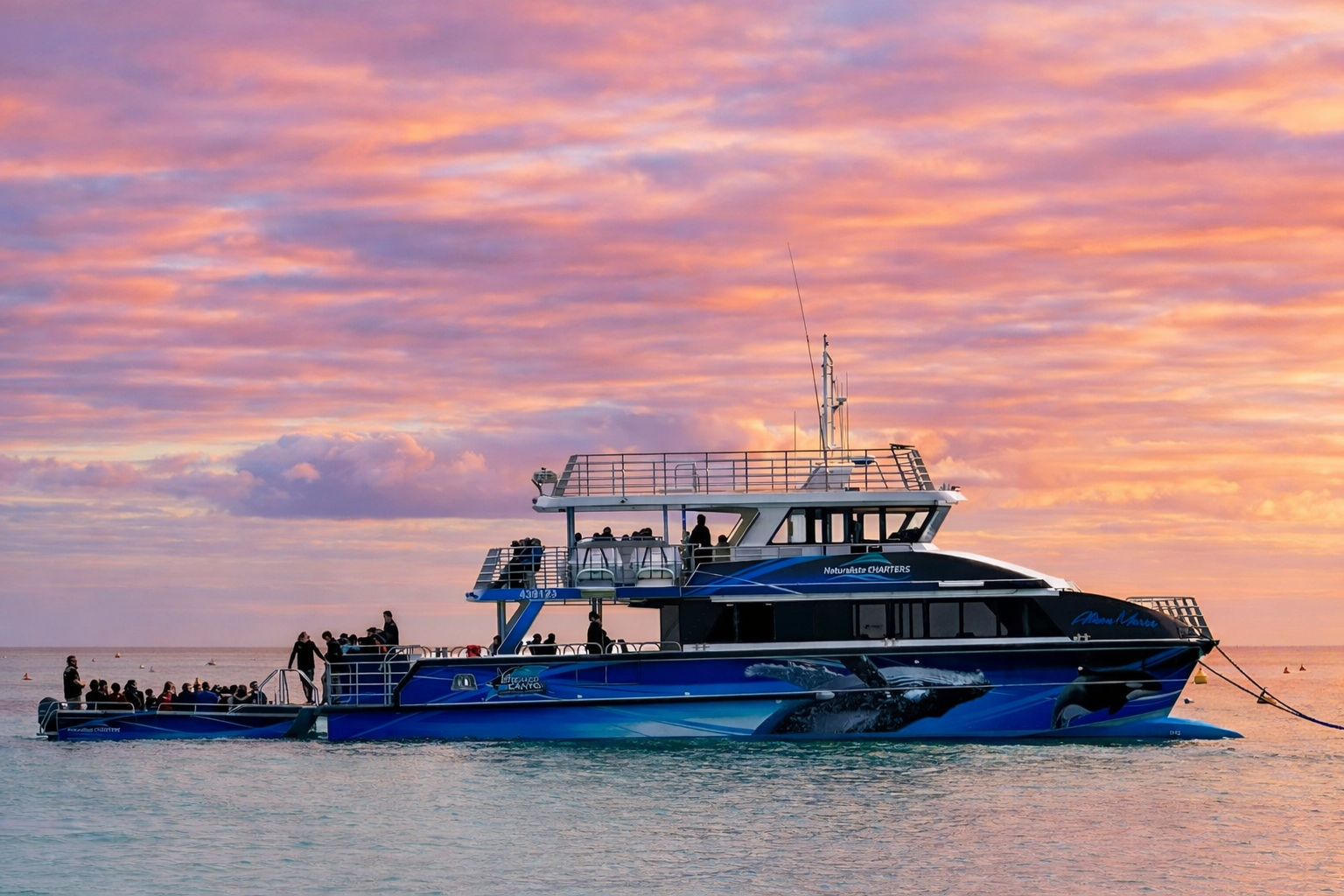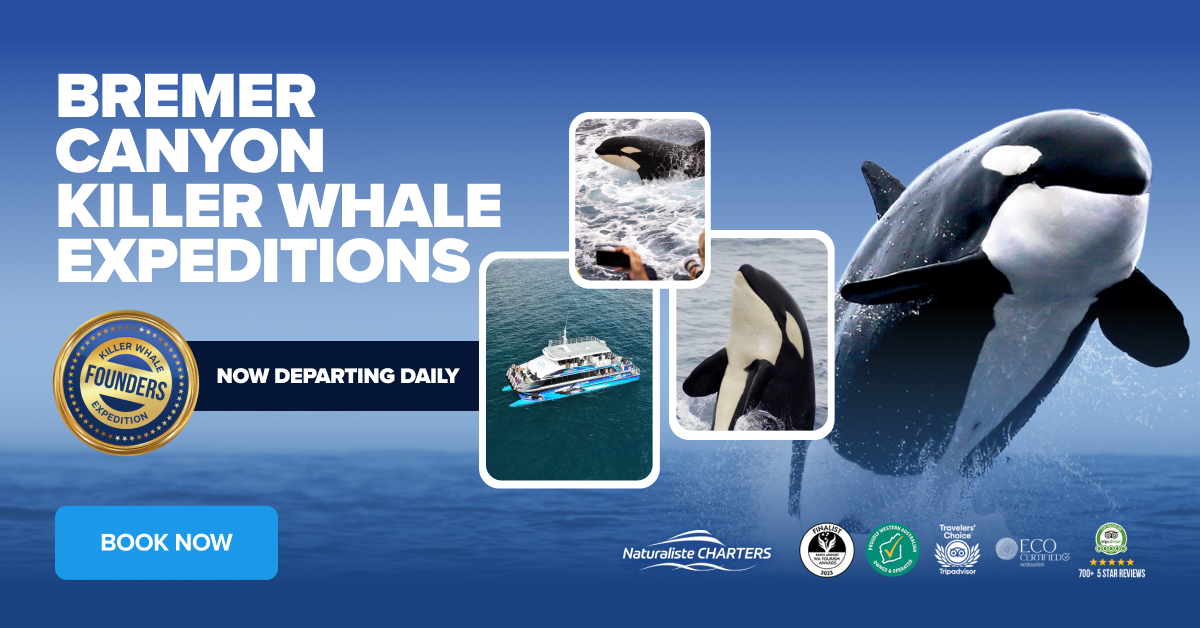What do Whales Eat?
Before we answer the question “what do whales eat,” we need to define what a “whale” actually is.
The word “whale” generally refers to some members of the mammalian order Cetacea, but it is often used inconsistently. Some people use it to describe the Great Whales, or baleen whales, and the unrelated sperm whale. Others include toothed whales, such as killer whales and dolphin species like the bottlenose dolphin. The term is scientifically imprecise and can refer to very different animals that are not closely related.
So, what do humpback whales eat? And what do killer whales eat? In this blog, we will separate whales into two groups to show how varied their diets can be:
– Baleen Whales
– Toothed Whales (specifically sperm whales)
Whales feed at nearly every level of the food chain, from tiny plants to large animals. They consume a wide range of prey sizes, from 1mm crustaceans to squid more than 15 metres long. Understanding what whales eat has long been a part of marine science.
In the past, researchers studied stomach contents to find out what was eaten. Today, advanced tools allow scientists to analyse whale diets in new and non-invasive ways. Whales use many different feeding strategies depending on their species, prey, and habitat.
Some consume large amounts of small prey all at once, while others hunt one target at a time. Certain whales feed alone, and others rely on group strategies to catch their food. So, what do whales eat? It depends on the type of whale—and that is where we go next.
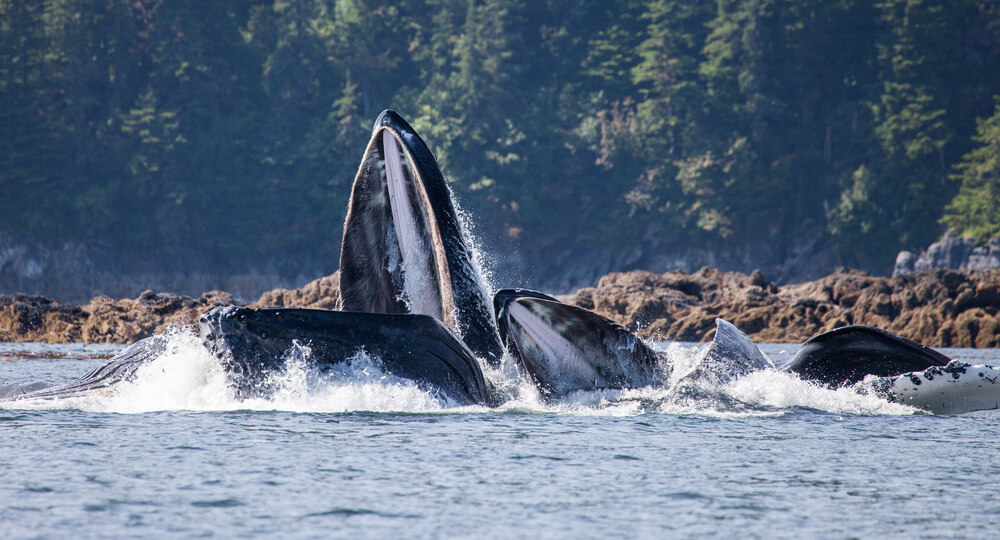
1. Baleen Whales (Mysticeti)
As a direct comparison to baleen whales, toothed whales select individual prey such as fish, squid, and other animals. There are 52 species of toothed whales, and their diets vary widely depending on their environment and hunting techniques.
In coastal areas, these whales feed on pelagic, demersal, and benthic fish, along with cephalopods like squid, octopus, and cuttlefish. Further offshore, their diet consists mostly of pelagic and demersal fish, and fewer cephalopods. Some, like killer whales, even target marine mammals using strong jaws and sharp teeth.
Species like sperm whales and beaked whales have fewer teeth and mainly feed on squid. They use suction feeding instead of biting or tearing. Suction feeding draws prey into the whale’s mouth by creating pressure.
One unique trait of toothed whales is echolocation. Through clicks and sound pulses, they detect prey and understand their surroundings—even in total darkness.
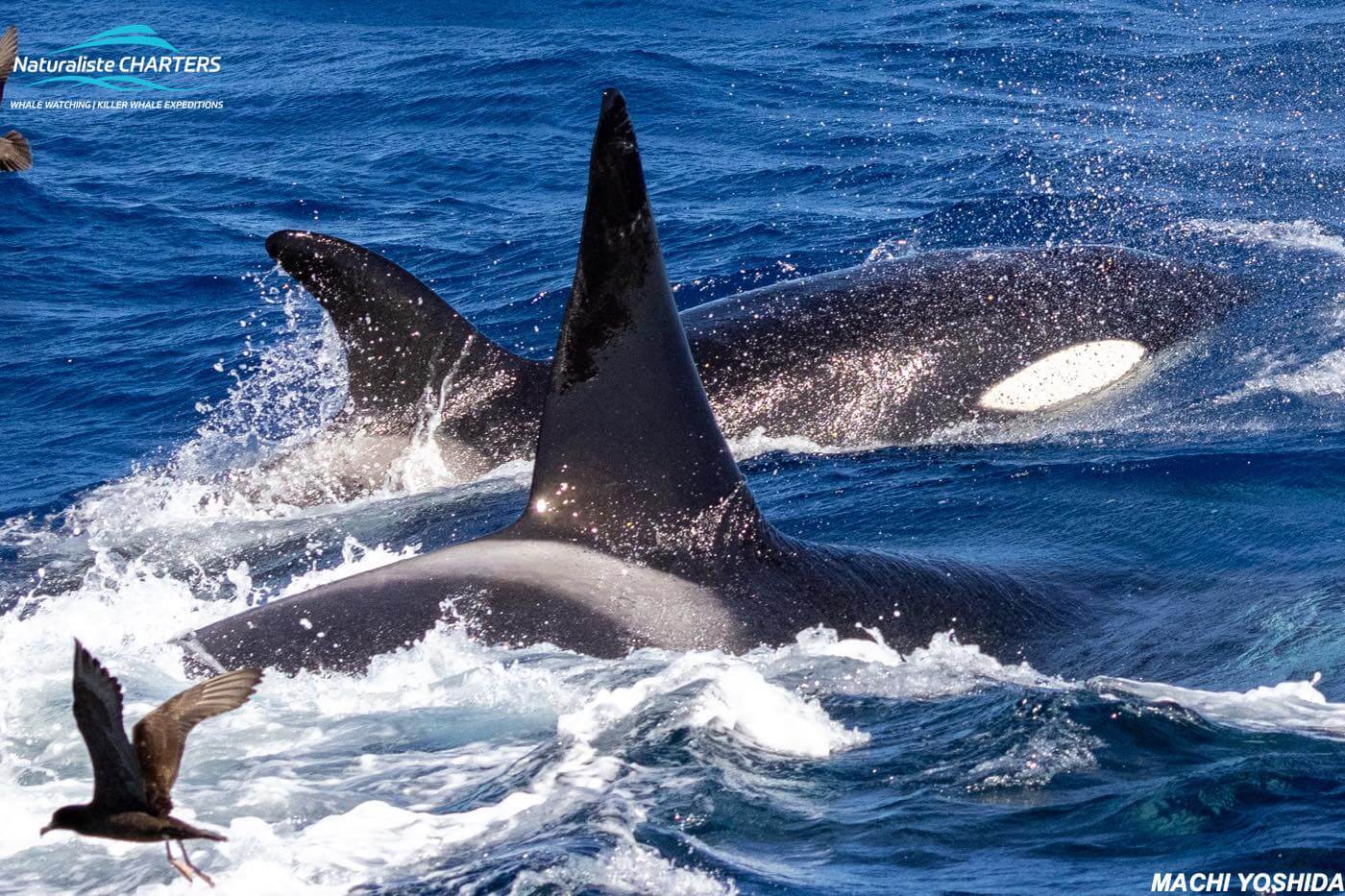
2. Toothed Whales (Odontoceti)
As a direct comparison to baleen whales who consume prey in large numbers, the 52 species of toothed whales will pick out individual prey items such as fish and squid. This results in a greater diversity of diet.
In coastal regions the diet includes pelagic, demersal, and benthic fish and also cephalopods (squid, cuttlefish, and octopus). Once out over the continental shelf toothed whales eat mainly pelagic and demersal fish and only some cephalopods. Some species such as killer whales will use their teeth and pincer-like jaws to capture larger animals such as marine mammals!
Toothed whales with reduced dentition (less teeth) such as sperm whales and beaked whales, will primarily feed on squid and are thought to be suction-feeders!
Toothed whales have a method of detecting prey which all other marine mammals lack – Echolocation! They can track down small objects over large distances. Through a series of clicks, the sound will refract off objects like schools of fish or the seafloor and bounce back to the whale. Without external ears, the sound has to hit the lower jaw and is amplified by fatty deposits which echo up into the inner ear canals. With advanced brains they can diagnose how far away, which direction and what the object is!
A sperm whale’s clicks sound like a metallic ball bouncing onto a table – very cool to hear!
As great as echolocating is, there are some limitations. The more external ocean noise there is, such as ships, the less effective the locating will be. Also when hunting mammal prey, the clicks can be heard by the mammal! Which means that their sneak attack is not so sneaky. For example, killer whales that hunt dolphins or other whales. The killer whales need to adopt other hunting methods to be successful.
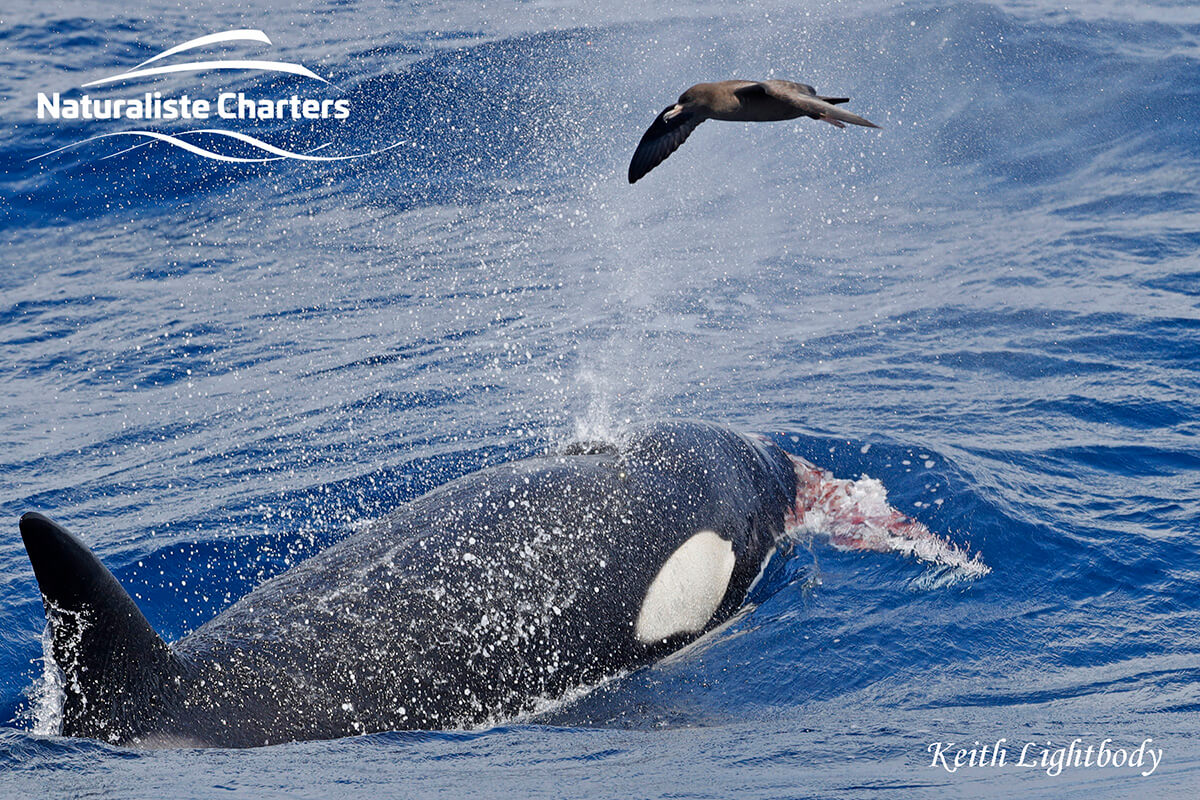
Would a whale eat a human?
Now you know what whales eat, you might wonder—do whales ever eat humans?
The simple answer is no, not intentionally.
Killer whales are apex predators with high intelligence, and technically, they could consume a human. However, there are no documented cases of orcas attacking humans in the wild. Injuries and fatalities have occurred in captivity, but these are linked to psychological distress caused by confinement in small tanks and unnatural environments.
One unusual incident involved a diver accidentally engulfed by a humpback whale. The whale was lunge-feeding through a bait ball, and the diver got caught in the action. Fortunately, a humpback’s throat is too narrow to swallow anything larger than a grapefruit, so the diver was quickly spat out unharmed.
To safely observe whales up close, join a professional tour. Whale watching in Australia offers the chance to witness baleen and toothed whales—sometimes even mid-feed—especially during the humpback migration in Augusta.


